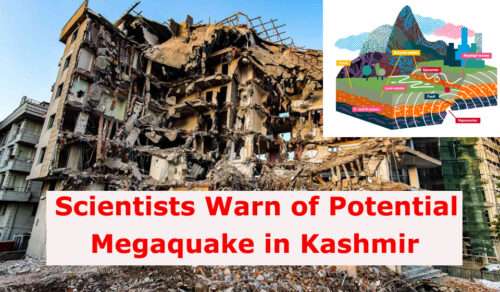Scientists Warn of Potential Megaquake in Kashmir
While the 2005 7.6 Kashmir earthquake caused 75,000 deaths and immeasurable damage to the lives of survivors, its devastating impacts could be a pale shadow of what is to come, cautions CIRES Fellow Roger Bilham.

“A magnitude 9.0 earthquake, though unexpected, is possible in Kashmir,” said Bilham, whose team of CIRES scientists, along with researchers from India and Pakistan, have studied rates of crustal deformation—telltale measurements of earthquake susceptibility—in the region for the past eight years.
The study’s results constitute the first comprehensive predictions of seismic activity in the area based on GPS measurements, and the collected data identify an area between the Kashmir Valley and the Pir Panjal Range where accumulating strain could potentially generate a megaquake.

This region, which is in the western end of the Himalaya in northern India and eastern Pakistan, lies along a collisional tectonic boundary, where the Indian continental plate is smashing into the Eurasian plate, thrusting up the Himalaya. By measuring how fast points in the mountain ranges to the northeast and southeast of the Kashmir Valley are converging, the researchers identified the “locked” region of the Kashmir Himalaya, north of which the rocks are being compressed. As the strain builds, the rocks will eventually reach a breaking point and allow the Himalaya to slide over the Indian plate.
- RRB Paramedical Recruitment 2024, Eligibility Criteria, Application Form
- Indian Navy SSR Medical Assistant Recruitment Notification 2024: Apply Online
- IGNOU Admission last Date Extended for July 2024 Session
- ITBP Constable Recruitment 2024, Last Date 10 September
- NO Extension of Date for J&K Police Form
In the past several hundred years small patches of the locked region have slipped in damaging but less extreme earthquakes than the maximum possible event now identified by geodetic data, Bilham said. If a 9.0 earthquake were to occur in Kashmir, he estimates the rupture would extend from the 2005 earthquake zone near Muzafferabad, Pakistan, to the Kangra 1905 earthquake zone in northern India—a distance of about 480 kilometers (300 miles)—and from the Zanskar Range to south of the Pir Panjal range—a distance of about 190 kilometers.
(Note: This Article Published by the Cooperative Institute for Research in Environmental Sciences (CIRES) last year.)
JK STUDENTS ONLINE GUIDE is a Professional Platform. Here we will provide you interesting content, which you will like very much. We’re dedicated to provide you latest updates with a focus on Jobs, Results, Scholarships study material, links for useful websites. Stay connected with us for latest updates by visiting our web